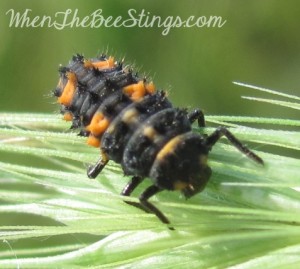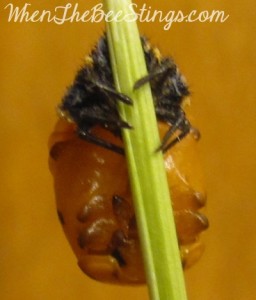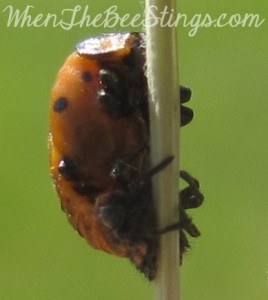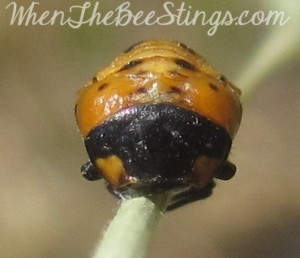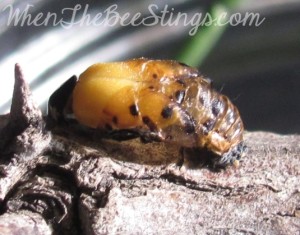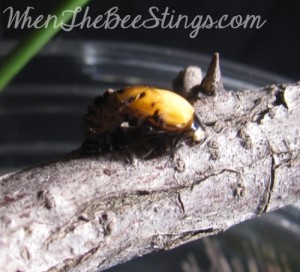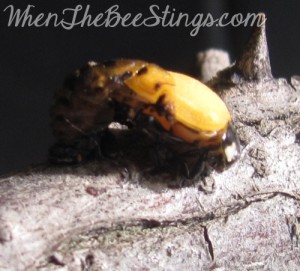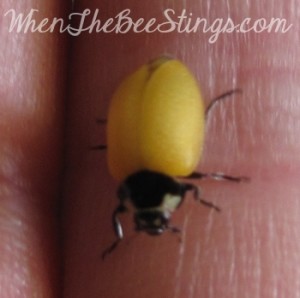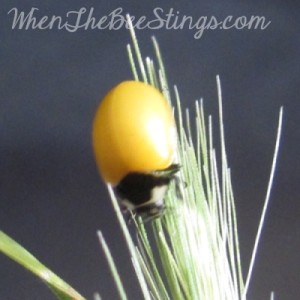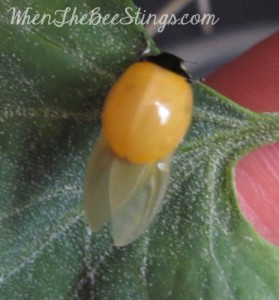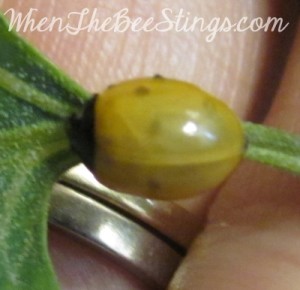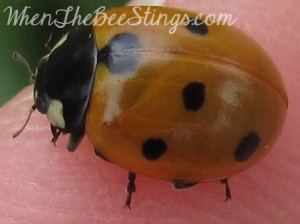We were so lucky to have a large ladybug hatch in our yard. I spotted their larva munching on some weeds we were about to pull & we watched them like a hawk for weeks.
Would you recognize this as a ladybug larva? It looks quite alien, no?
After they get their fill, the larvae find something to attach themselves to & enter the pupal stage. In this photo, you can see the larval legs up top & the newly forming leg buds of the ladybird beetles final shape. The segments on the very bottom are actually going to form the beetles’ face. The ladybug pupa completely turns around inside in its metamorphosis!
Here, you can see the ladybug pupa’s permanent legs growing & darkening. Also notice what was the larval skin is shriveling.
The pupa’s face gets darker as it changes.
Happy birthday, ladybug! The ladybug emerges from its shed pupal skin. There’s some neat metamorphosis vocabulary about this stage. The adult ladybug still in its pupal case is called a “pharate”. The shed pupal case (the larva’s skin!) is called the “exuvia”. The verb for coming out of the pupal case is “eclose”.
Shortly after the pharate adult has eclosed (using those new words!), its elytra (fore wings) are soft & light yellow. And no spots!
Like the majority of beetles, adult ladybugs have two sets of wings. They do not fly with the wings that we can see. The elytra are hard wing-coverings for their delicate true wings (hind wings). Now the ladybug has to stretch out its hind wings until the blood in the veins dry & harden permanently.
Did you know ladybugs had these hidden wings? You rarely see them unless they’re in flight!
The ladybug is getting harder & darker & spots are appearing.
Almost done! The ladybird beetle is now dark orange, and on its way to turning dark red as the elytra continue to harden. We took this ladybug outside & it flew away, off to eat over 5,000 aphids in its life!

